Melbourne, Australia
Melbourne is Australia’s second largest city after Sydney the cultural center of the country. While Sydney and Queensland have unseasonably warm weather for much of the year, making it a beach destination, Melbourne and Victoria—which sit on the southern coast of the continent, making it a little cool for sporting that bikini—is ideally situated for arts institutions. Luckily, the city compensates for its lack of beaches with an abundance of art galleries, festivals, a variety of music outlets, and lively food and drink culture.
A gay and lesbian bed-and-breakfast, 169 Drummond (169 Drummond St, Carlton, 3-9663 3081, 169drummond.com.au) is in the heart of Melbourne and steps from the cluster of Italian restaurants on Lygon Street. Prahran Village Guest House (39 Perth St, Prahran, 3-9533 6559, guestlink.com.au), in chi-chi south Melbourne, offers elegant, modern rooms close to bars and nightlife; it’s a 10-minute tram ride to the city center.
Speaking of which, the best way to get acquainted with the city is to hop on the free Melbourne City Circle Tram. These vintage trolleys take you around the old part of central Melbourne and offers easy hop-on, hop-off access. Hop off at Flinders Street Station and walk over to Federation Square. This bold public space is the center for Melbourne’s tourism information and a good place to find out what events or shows will be happening during your stay. Festivals are a huge part of Australian culture. Whether it’s a music, film, or queer festival, there’s a full calendar during the summer months (November through March in the southern hemisphere). Afterwards, take a stroll to the Block Arcade, a beautiful 19th century arcade shopping area, a great place for a light lunch.
Melbourne originated as a British prison colony where the mother country shipped its convicts. The Old Melbourne Gaol (377 Russell St, 3-9663 7228, oldmelbournegaol.com.au), is full of stories about the first inhabitants of the region, like the infamous outlaw Ned Kelly (played by Heath Ledger in the eponymous 2003 movie). Or you can go to the Melbourne Museum (11 Nicholson St, 3-8341 7777, museumvictoria.com.au) and learn about the region’s history and relationship with aborigines.
In addition, Melbourne has a strong gay and lesbian community integrated into the general populace. Gay and gay-friendly businesses and restaurants blanket the city, satiating the tastes of any lesbian traveler (except those who prefer to walk around in only swimwear). The scene is divided by the Yarra River, which splits the eastern side of the city in half. Southside is decidedly more posh, leaning toward dress codes and designer accessories. The main gay strip in this area is on Commercial Road, connecting South Yarra and Prahran. Heaven’s Door (147 Commercial Rd, 3-9827 9147) is a fun bar with weekly drag shows and no cover. If you’re looking for something a bit more exclusive (and with better drinks) get a reservation at Borsch Vodka & Tears (173 Chapel St, 3-9530 2694, borschvodkaandtears.com) specializing in, yes, vodka, with more than a hundred different concoctions and vodka flavors.
The Northside is reputedly more bohemian, drawing the current hipster culture. This, naturally, is the more lesbian side of the river, with cafes, small bars and lots of cute consignment shops and quirky boutiques. Colllingswood and Fitzroy are the main neighborhoods. Take a walk down Brunswick and the edgier Smith Street. There are plenty of fun bars to try out, like Naked for Satan (285 Brunswick St, nakedforsatan.com.au), where you can get $1 pintxos (Spanish bar-bites) during lunch and happy hour while sipping on some Sangria or one of their cocktails. After getting your fill, head up the street to Libation (302 Brunswick St, 3-9416 5302, libation.com.au), a cozy lesbian bar that hosts local musicians. Be prepared for an acoustic set of PJ Harvey and Smiths covers.
Check the events calendar of the free weekly newspaper published on Thursdays, the Melbourne Community Voice, if you want to know where the cool kids are going or if there are any upcoming parties in the city. Melbourne’s own community radio station, JOY 94.9 (joy.org.au), also provides regular updates about key goings-on.
When you’ve had enough of the city life, it’s time to hit the road. One of Melbourne’s charms is its proximity to one of the greatest drives in the world: The Great Ocean Road. The drive is 151 miles of coastal awesomeness. While you could complete it in one day, we recommend you take a few days to cruise around, venture on a couple hikes and watch the sunsets over the coastline. Plan on making it as far west as Port Campbell National Park (parkweb.vic.gov.au) to see the Twelve Apostles—a group of massive limestone crags jutting out of the ocean—then meander on your way back.
If you’re willing to rough it, spend a night at Bimbi Park (90 Manna Gum Dr, Cape Otway, 3-5237 9246, bimbipark.com.au). You can lodge in a tent, rent a cabin, or (for the truly Aussie experience) shack up in one of the renovated caravans. A number of gay or gay-friendly bed-and-breakfasts also provide a cozy home away from home along the route.
For another quick day trip out of Melbourne, join the Penguin Island Small Group Eco-Tour, a cruise by boat to Phillip Island operated through Viator (viator.com). The tour includes wine and cheese tastings, a visit to the Koala Conservation Center, and watching fairy penguins wading to their burrows at dusk.
Mexico City, Mexico
You might underestimate Mexico. Sure, there are the seaside resorts of Cabo, Cancun and Acapulco—tourist-oriented resorts that cater to international travelers—but the interior of the country has much to offer, too. The country has rich regional culture and great food. And, since 2009, it’s more progressive (where it counts) than its northern neighbor, having legalized same-sex marriage in the capital. You may hear that Mexico is dangerous, but this talk mostly refers to the unsettled border with the U.S. Mexico City is generally safe, as long as you take the usual precautions appropriate in any big city. If you are a cosmopolitan traveler, then you’ll feel right at home in the Distrito Federal of Mexico City.
To get the flavor of the D.F., it’s best to start in El Centro, the historic center. Although technically named the Plaza de la Constitucion, the large square at the heart of the city is commonly known as the Zocalo (as is the case in most cities in Mexico). This is the historic focus of the city and the start of any good walking tour. Some must-see highlights are the enormous National Palace and Metropolitan Cathedral on two sides of the main square. Behind the Cathedral is the Templo Mayor, the main temple of the Aztec city of Tenochtitlan. If you’re thirsty or could use a little snack, try your luck with the vendors in the Templo square. If you can handle the fire of chili peppers, you’ll be rewarded.
Walking east out of the Zocalo, take Madero along the pedestrian route to have a coffee or taco at one of the cafes that break up the jewelry shops lining the streets. A perfect spot to try a sample of the local beverages is in the city’s only gay cantina, El Viena (República de Cuba 2E, 55 5512 0929), a couple blocks from the Palacio de Bellas Artes (Av Hidalgo 1 , 55 5512-2593, bellasartes.gob.mx) and the gorgeous National Post Office (Tacuba 1, 55 5340 3300, sepomex.gob.mx). Although tequila is the famous export of Mexican liquor, Mezcal has been the local choice for ages, and has made a recent surge into the cocktail circuit in Mexico and abroad. While tequila has stringent rules on the origins of the blue agave and must be produced in the state of Jalisco, Mezcal—which is primarily from Oaxaca—is a smokier version of the agave liquor, but can come as crisp and honeyed as a high-end tequila, or delicately flavored with fruits and fragrant flowers.
Walking away from the Zocalo and the Bellas Artes down the Paseo de La Reforma, you will reach the Zona Rosa. This is the most progressive of all Mexican regions in terms of gay rights and social acceptance. It’s known as the gay quarter as well as one of the most touristy areas of the city with plenty of bars, restaurants and dance clubs. Hit the dance floor at Lipstick Bar (Amberes 1 at Paseo de la Reforma, 55 5514 4920), the most popular dance club in the neighborhood. There are several other clubs along the strip to make a night of it.
Down Insurgentes, just south of the Zona Rosa, is the Condesa neighborhood. Currently the most fashionable area of the city, Condesa is filled with shops and hip new restaurants along the tree-lined streets. While in the neighborhood, go on a gastronomical tour of Mexico at Azul Condesa (Neuvo Leon 68, 55 5286 6380, azulcondesa.com), or try authentic al pastor (slow roasted pork) tacos at either Taco Hola (Amsterdam 135 at Michoacan) or the self-proclaimed “creators of tacos al pastor,” El Tizoncito (Tamaulipas 122 at Campeche, 55 5286 7321).
No visit to Mexico City would be complete without checking out the ancient pyramids at Teotichacan. The off-season (fall and pre-Easter spring) is a perfect time to enjoy the awesomeness of this ancient cultural site that predates even the Aztecs. While hiring a personal guide is not necessary, it’s relatively inexpensive (around $10 per person) and you could end up with a first-rate conspiracy theorist expounding on the disappearance of the inhabitants and the meanings of its structures. Along your walk you’ll find many locals selling a variety of crafts; you may end up with a wooden toy that makes the sound of a jaguar or a trinket even more bizarre. Buses to Teotichacan run from the city’s two main bus stations every half hour and cost about 70 pesos roundtrip (approximately $5).
Getting around the city is easy and surprisingly cheap. During the day, the metro is a great option. The lines get you to and from the airport to most locations in the city for a quarter. Ride in the city’s center during rush hour and be treated to female-only cars in the front of the trains. (Misunderstandings can happen if you’re less femme-y, but the guards are fairly quick to catch their mistakes.) In the evenings, hop a cab. They’re everywhere, and tourist rip-offs are uncommon.
For accommodation in the city, stick to the Centro and Zona Rosa areas. Embassy Suites (Paseo de la Reforma 69, 55 5061 3050, embassysuitesmexicocity.com) is a member of the International Gay and Lesbian Travel Association and actively courts its gay travelers. El Patio 77 (Icazbalceta 77, Colonia San Rafael, 55 5592 8452, elpatio77.com) is near both the historical center and the Zone Rosa, and has a mix of gay and straight clientele. For a nice room on a budget, try the Hostel Regina (5 de Febrero 53 at Regina, 55 5709 4192, hostalcentrohistoricoregina.com) very near the Zocalo.
Berlin, Germany
Since the wall came down in 1989, Berlin has had a healthy explosion in its gay and lesbian scene, rivaling the heyday of the Roaring Twenties. Along with the liberal government of Germany and female chancellor Angela Merkel, Berlin has a proudly gay mayor (he came out during his mayoral bid by saying “I’m gay, and that’s a good thing”). Shonenberg is probably the pinkest district, and several neighborhoods have a high concentration of LGBT cafes and bars. But even in the Mitte (city center) there are many areas with a happening gay scene.
Berlin can be as overwhelming as New York if you’re short on time. There are so many museums, parks, historical sites and cultural points in this sprawling city that you must either prep for a sightseeing endurance test, or be content with skimming the surface.
Berlin has been a capital of the western world for much of 20th century. You could spend an entire week delving into the history of World Wars I and II, the Holocaust and the GDR (Communist East Germany). Start at the Deutsches Historisches Museum (Unter den Linden 2, 030-203040, dhm.de), an enormous museum that takes visitors through the entirety of German history, from feudal states and unification to the Berlin Wall and reunification. If inclined, you could spend all day here and still rush through by closing time.
Once you have a good feel for the city’s provenance, walk east from the museum on Unter den Linden. The grandest street in Berlin, home to many museums, embassies and stores shaded by overhanging Linden trees, ends at the Brandenburg Gates. From here you’ll have to decide whether to go up to the Reichstag (Parliament) building (Platz der Republik 1, 030-227-0, bundestag.de) or south to the abstract Memorial to the Murdered Jews of Europe (Cora-Berliner-Strasse 1, 030–263943-36, stiftung-denkmal.de).
If it’s a nice day, you may consider renting bicycles and taking a ride through the Tiergarten (Berlin’s central park) and visiting the Berlin Zoo (Hardenbergplatz 8, 030- 254010, zoo-berlin.de), which is just south of the park and has the largest range of species in the world. Or you could continue east to the Schloss Charlottenburg (Spandauer Damm 10-22, 030-320911, spsg.de), the Prussian royal residence in Berlin from the 17th to the end of
the 19th century. The palace has elaborate internal decorations in baroque and rococo styles, and a very large formal garden that is a major tourist attraction. If palaces are your thing, consider taking a 30-minute train ride to Potsdam, on the outskirts of Berlin, to Sanssouci (Schloss Sanssouci, 0331-9694202, spsg.de), the summer palace of Frederick the Great. This lavish palace is the German answer to Versailles.
For all its glorious beauty, Berlin can’t escape the darkest eras of its history. Numerous museums show how Germans have suffered persecution and oppression. The Topography of Terror, housed at the site of the SS headquarters (Niederkirchnerstrasse 8, 30 254509-50, topographie.de), takes the most comprehensive look into the campaigns the Nazis took to ‘cleanse’ the German nation of undesirables and the awful tactics they used. Nearby, the Judisches Museum (Lindenstrasse 9-14, 030-25993300, jmberlin.de) displays not just the experience of the Holocaust, but also of Jews throughout German history.
Kreuzberg, one of the hotspots of the gay scene, boasts the Schwules (Gay) Museum (Mehringdamm 61, 030-69599050, schwulesmuseum.de). This fascinating institution traces homosexual heritage back to the beginning of recorded time, but perhaps most interesting is its archives of gay Berlin from the early 20th century through today. Have a swanky dinner at gay-owned La Cocotte (Vorbergstrasse 10, 030-78957658, lacocotte.de) and then hit up one of the bars on Oranienstrasse, which is the main drag in Kreuzberg. Try the Roses Bar (Oranienstrasse 187, 030-6156570) for its kitsch factor and heavy pours. If you want a late night snack, you’ll find a large following at Burgermeister (Oberbaumstrasse 8, 030-22436493). Don’t be turned off that the burger stand was converted from an old public toilet. Burgermeister legitimately has one of the best burgers in Berlin, and probably Germany. It makes a great story for your pals back home!
Lesbians tend to congregate around specific nights and parties instead of places. Kino International (Karl-Marx-Allee 33, 030-24756011, kino-international.com) hosts a monthly Girls Town party (girlstown-berlin.de) on the second Saturday of the month and bi-monthly in the winter near Alexanderplatz. Tuesday and Friday are girl nights at Ackerkeller (Bergstrasse 68, 030-36461356, ackerkeller.de); Serene Bar (Schwiebusser Strasse 2, 030-69041580, serenebar.de) dedicates Saturday nights after 10pm to the ladies and DJ(ane)s.
Women-only hotels are rare in the world, but leave it to Berlin to have two of them. Artemisia (Brandenburgische Strasse 18, 030-8609320, frauenhotel-berlin.de) in Wilmersdorf and Intermezzo (Gertrud-Kolmar-Strasse 5, 030-22489096, hotelintermezzo.de) in the Mitte, both offer female-only accommodation. But don’t expect a queen-sized bed: German hotels customarily have twin beds adjacent to each other for couples. If you must have a queen, go for the Best Western Hotel President (An der Urania 16-18, 030-219030, hotel-president-berlin.de).



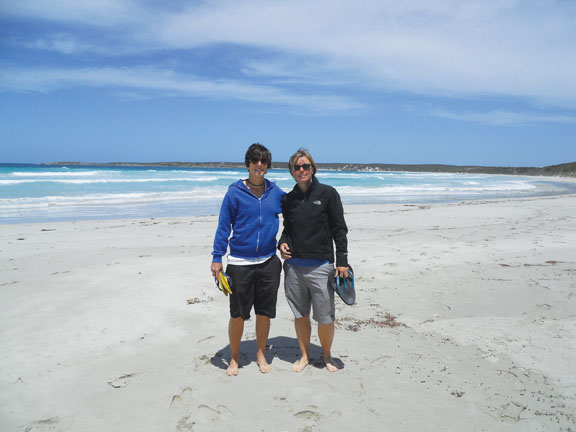

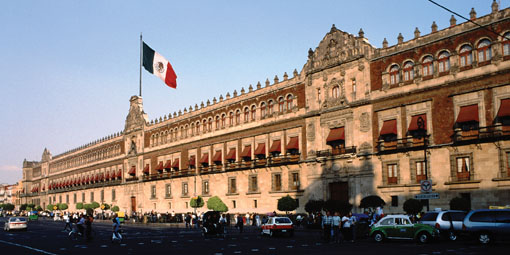

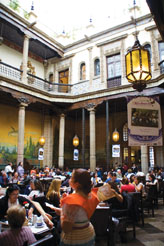
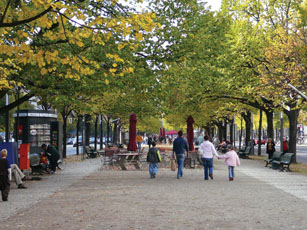
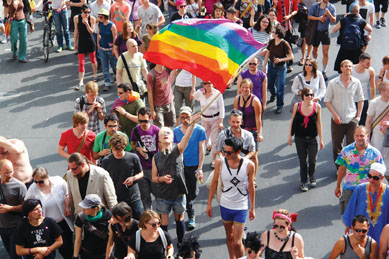
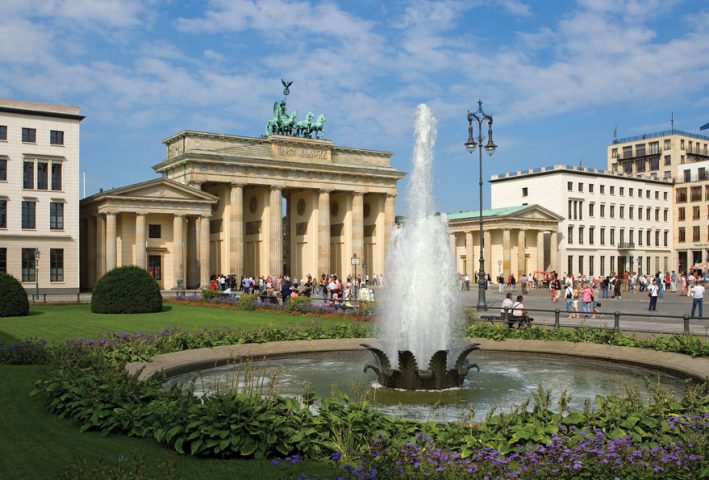
What Do You Think?